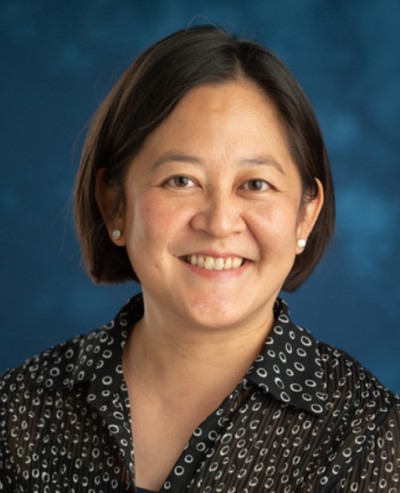University of Michigan Hospital deploys Epic-linked 'patient monitoring at home'

University of Michigan Hospital, Ann Arbor, Michigan
The University of Michigan Hospital in Ann Arbor, Michigan, implemented a patient monitoring at home, or PM@H program, using fully managed device kits prior to the pandemic. Studies show great benefits for patients, as well as hospitals, when patients are monitored in the 30-day post-discharge period.
THE PROBLEM
With this information, the hospital convened a group of thought leaders consisting of its post-acute care services division, which is managed as part of health system Michigan Medicine's home health agency, Michigan Visiting Nurses.
"We conducted a formal request for proposal throughout 2019 [and] 2020 where we evaluated several vendors to select the one who best suited our needs," said Brandy Knudson, virtual care project manager in the remote patient engagement and monitoring virtual care department at the University of Michigan Medical Group.
"The timing of the pandemic was such that we had completed our evaluation process right at the point in which the pandemic hit the state of Michigan in mid-March," she said.
The biggest driver was to determine how to increase capacity to the hospital without having to use a hospital or clinic to monitor patients. The hospital wanted to be able to alleviate its capacity issue by using a service where staff could care for patients in a way that would help prevent more emergency department visits and readmissions.
"While in the first wave of the pandemic, we used the PM@H program on only a handful of COVID-19 patients," Knudson recalled. "By November, we had developed an early COVID-19 completion pathway that provides wraparound services consisting of PM@H, MVN and house call medical-provider virtual visits in an attempt to shorten length of stay in the hospital and wean some off at home."
PROPOSAL
The University of Michigan Hospital set out to select a fully managed device kit that would allow it to monitor patients once they are discharged with a "kit" that provides them a Bluetooth-enabled blood pressure cuff, thermometer, pulse oximeter and tablet to send vitals and symptoms data to nursing for monitoring.
"Goals of this program are to reduce length of stay by discharging patients home earlier while also reducing readmissions and unnecessary trips to the ED," said Grace Jenq, associate professor in the division of geriatrics and palliative care medicine at the University of Michigan Hospital.
"Once patients meet criteria and opt for enrollment into the program, the patient is given the kit. They are assigned a care pathway specific to their condition that includes condition-specific questions and the associated vital-sign upload requests."
Grace Jenq, the University of Michigan Hospital
"Patients are identified at several ED and inpatient locations, as well as respiratory clinics, as needing monitoring for shortness of breath if they don't meet hospitalization criteria," she said.
The hospital launched with vendor Health Recovery Solutions' Fully Managed Device Kit solution. It started with 250 COVID-19 kits. Patient data and alerts are monitored centrally by post-acute care services (with RNs and physicians).
MARKETPLACE
There are many vendors of telemedicine technology and services on the health IT market today. Healthcare IT News recently compiled a comprehensive list of these vendors with detailed descriptions. To read this special report, click here.
MEETING THE CHALLENGE
Upon discharge from the hospital, emergency department, respiratory clinic or Michigan Medicine's home health agency, patients who meet criteria of multiple comorbidities and high readmission-risk scores are referred to the PM@H program managed by post-acute care services.
"Patients referred to the program include CHF, cirrhosis, COVID-19 positive and other comorbid patients," Jenq explained. "Once patients meet criteria and opt for enrollment into the program, the patient is given the kit to take home, or they are shipped the equipment. They are assigned a care pathway specific to their condition that includes condition-specific questions and the associated vital-sign upload requests."
Patients are instructed to upload their vitals two to four times a day for a 30-day period post-discharge. The post-acute care services nursing team reviews patient data and monitors the Health Recovery Solutions portal dashboard for patients who fall outside of their specific parameters. Upon receiving an abnormal alert, the nurse will conduct a video visit or telephone call through the Health Recovery Solutions tablet with the patients.
If further escalation is needed, an advanced-practice practitioner – such as a nurse practitioner, physician assistant or physician-on-call for post-acute care – triages the patient's care with the appropriate care team or to the appropriate location, as necessary.
"This capacity has also allowed us to meet the video-visit demand during the second COVID-19 surge we are now experiencing."
Brandy Knudson, University of Michigan Medical Group
The Health Recovery Solutions portal is now integrated with the hospital's Epic electronic health record.
RESULTS
Preliminary findings demonstrate a decrease in readmission rates and ED utilization pre- versus post-utilization of the PM@H program. Data is preliminary and staff is not yet ready to share exact numbers. Staff members do report "excellent patient satisfaction and engagement scores" in the program. The majority of patients are individuals aged 60 and older, who have found the technology easy to use, the staff has said.
USING FCC AWARD FUNDS
In mid-2020, the FCC's telehealth funding program awarded the University of Michigan Hospital $649,000 to implement remote patient-monitoring for high-risk COVID-19 patients in order to reduce the need for hospital admissions and to expand video-visit capacity so that patients with and without COVID-19 can receive medical care at home during the pandemic.
"In addition to helping provide the infrastructure for our PM@H program, we used the FCC funds to expand our video-visit infrastructure capacity to allow for up to 400 concurrent video visits, which was necessary to meet the video visit demand during the COVID-19 surge," Knudson reported.
"This capacity has also allowed us to meet the video-visit demand during the second COVID-19 surge we are now experiencing."
Twitter: @SiwickiHealthIT
Email the writer: bsiwicki@himss.org
Healthcare IT News is a HIMSS Media publication.

























